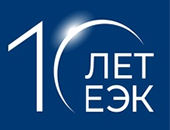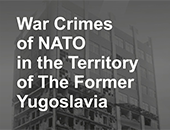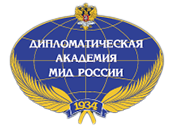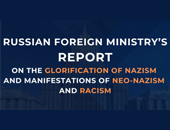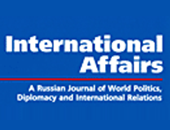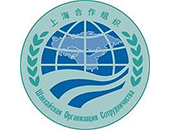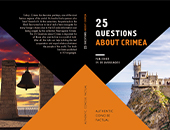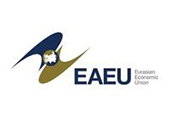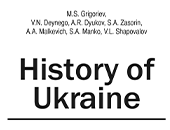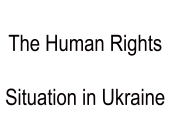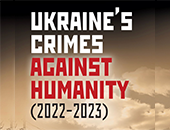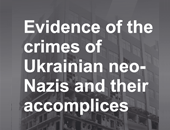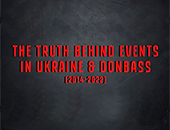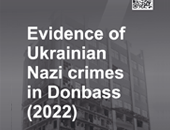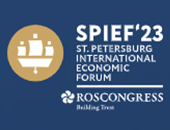Comment by the Information and Press Department of the Ministry of Foreign Affairs of the Russian Federation on the Syrian chemical dossier, 7 April 2017
The Russian Federation has invariably held a clear and unequivocal position that any use of chemical weapons by anyone is absolutely unacceptable under any circumstances, and those responsible for such crimes must be held accountable.
However, we cannot but note that the so-called “red lines” initiated by administration of the former US President Barack Obama in 2012, the “crossing” of which was supposed to trigger outside military intervention in the intra-Syrian conflict, was clearly the watershed moment in this story – which has been so unscrupulously distorted by our Western partners – about the use of toxic chemicals as a chemical weapon in Syria and later the use of actual chemical warfare agents. It was this decision that served as a starting point for numerous ensuing provocations by terrorist and extremist groups with the use of chemical weapons by which they sought to discredit official Damascus and give a pretext to the “friends of Syria” to use military force against the sovereign state. Up until then, even if there had been reports about the use of chemical weapons in the region, they concerned only Libya, where, in the absence of the Libyan statehood destroyed by NATO countries, non-state actors occasionally used chemical weapon – Yperite-filled artillery shells – in local turf wars.
We have to state with regret that back then, in the absence of a political “order”, our Western partners in the Security Council chose to remain silent and inactive also in connection with the request received from Damascus as early as in March 2013 to activate the well-known UN Secretary General’s mechanism to investigate the use of sarin by militants in Khan al-Assal suburb of Aleppo. This terrorist attack killed 28 Syrian troops and civilians, and injured over 200 people.
It were the inaction of our partners in the UN Security Council and impunity of the militants that encouraged the latter to perpetrate a larger attack with the use of sarin on August 21, 2013 in the outskirts of Damascus, the Eastern Ghouta district, that, according to various estimates, killed and wounded over 1,500 people. This was still not enough for the opposition and its foreign patrons – more than that, they tried to blame this barbarous action on Syrian government troops, timing it to the first visit to that country by a group of UN experts led by Swedish chemistry professor Åke Sellsrtöm. We will not now go over the outcomes of the investigation into the terrorist attack in Eastern Ghouta – rather revealing in terms of not quite sophisticatedly fabricated evidence presented by the opposition to the international community. Those who want to refresh their memory can read the report by Mr Sellsrtöm at the UN website (http://www. Un.org/ga/search/view_doc.asp?symbol=S/2013/553). They can also read the studies by American experts in the field of military science and ballistics: Professor of the Massachusetts Institute of Technology Theodore A. Postol and former UN arms inspector Richard Lloyd who crunched the numbers and took to pieces the account fabricated by the opposition which alleged that the Syrian Armed Forces used BM-14 multiple rocket launchers in Eastern Ghouta, although the Syrian army had withdrawn them from operational use back in 2010 (https://www.voltairenet.org/IMG/pdf/possible-implications-of-bad-intelligence.pdf). It would also be useful to look at the materials of the journalistic investigation by Georges Malbrunot and Christian Chesnot (“LES CHEMINS DE DAMAS. Le dossier noir de la relation franco-syrienne”). In a word, a fake is a fake, but someone really wanted to use it as a pretext to replay the Yugoslavia, Iraq or Libya scenario in Syria.
Nevertheless, in the final count the plans of the extremists and their sponsors were not destined to materialise, and common sense prevailed. Thanks to the good will that Damascus showed in abandoning its chemical weapons, through combined Russian-US efforts and with complete support from the international community, it became possible in short order to successfully achieve the main goals of Syria’s chemical demilitarisation, for which the OPCW was justly awarded the 2013 Nobel Peace Prize.
Everything would have ended on a positive note had not someone needed again, out of political considerations, to apply “double standards” to Syria’s chemical demilitarisation. Hence the contrived accusations against the Syrian military of using chlorine, as well as the notorious Syrian “chemical dossier” that boils down to the allegation that Damascus had concealed a part of its military-chemical arsenal in its initial report to the OPCW.
As it became evident that Bashar Assad’s government had successfully met the targets of destroying its chemical arsenal within an unprecedentedly short time span and under the most difficult circumstances of the armed conflict, since the spring of 2014 there have been a series of planted stories alleging that Syria used chlorine as a chemical weapon. The choice of this chemical leaves no doubt that terrorists have learned or were helped to learn the lessons of Eastern Ghouta. Chlorine, as a common industrial and household disinfectant, is not on the OPCW list of chemical agents and it is practically impossible to place it under any verification control. What is more, it is all but impossible to detect chlorine traces even after a short time due to its high volatility. It was with due consideration for this circumstance that the OPCW Fact Finding Mission for Syria was set up with Damascus’s consent, designed to promptly respond to incidents of this kind. What has happened in reality, however, is the exact opposite: the Fact Finding Mission has never inspected the areas where chlorine was used.
Why? Because, according to a well-established scenario, the very first visit of FFM experts to Syria in the spring of 2014 “coincided” with a large-scale provocation by militants involving the use of chlorine in Idlib Province. However, when FFM specialists tried to visit the area of the alleged incident on a tip-off from the opposition itself, they were taken hostage by militants, which essentially put an end to any further activity by FFM experts on the ground in districts outside Damascus’s control. This is the origin of the flawed practice in the work of the FFM and then the OPCW-UN Joint Investigative Mechanism (JIM) aimed at investigating chemical weapons attacks in Syria, whereby the reports of the alleged use of chlorine by government forces fabricated by the Syrian opposition and various “sympathetic” NGOs are taken at face value. In other words, the mission does not need to trouble itself with visiting the areas where toxic agents were purportedly used because supposedly there is a danger to the safety of OPCW and UN personnel. Well, then, what about implementation of the UN Security Council Resolutions 2118, 2209 and 2235 that make it incumbent on all parties to the Syria conflict to ensure unhindered access to the sites of chemical incidents for international experts. By the way, this provision also applies to those subjects of international relations that have influence over these parties to the conflict, above all the opposition.
In this context another remarkable thing should be noted. The numerous pseudo-advocates of the Syrian people’s interests insist both in the Hague and in New York that OPCW experts visit without delay any research and military infrastructure facility in Syria despite Damascus’s recommendations that such inspections be postponed for security reasons, blaming any delays over such visits on the Syrian authorities who ultimately are responsible, within their sovereign jurisdiction, for the life and health of international experts.
This situation has created ideal conditions for the armed opposition and those behind it for “filtering” practically all information coming to the FFM and then to the JIM on the incidents they declare themselves, which has naturally affected the quality of the reports by both international agencies.
Thus, the findings by one of the FFM’s expert segments investigating incidents directly or indirectly reported by the armed opposition are entirely based on some eyewitness accounts selected by the same opposition groups and NGOs affiliated with them. Their interviews are conducted not even in Syria but in neighbouring countries, where photo and video materials are also collected, which can easily be falsified. Now what about medical reports and conclusions, the results of biomedical tests, autopsies and other forensic medical examinations? Do these documents actually exist? Apparently, they do exist in some form but definitely need comprehensive verification with the use of criminological examination as to their authenticity and correspondence with realities inherent in the case of use of toxic agents under certain circumstances. These conclusions are prompted, for example, by the “testimony” most actively provided by senior personnel at the field hospital in Sarmin which represents the so-called Syrian American Medical Society (SAMS). In June 2015, these medical officials demonstrated at the US Congress and the UN Security Council some rather dubious photo and video materials on the alleged victims of chlorine attacks by Syrian aviation. Everybody knows very well how such materials are fabricated ever since the tragic events in Eastern Ghouta, as evidenced by their thorough analysis made by Mother Agnes Mariam el-Salib, mother superior of St. James Monastery in Qara (http://www.globalresearch.ca/STUDY_THE_VIDEOS_THAT_SPEAKS_ABOUT_CHEMICALS_BETA_VERSION.pdf).
Furthermore, the expert opinion by independent medical specialists from Sweden following a study of the video materials prepared by the White Helmets, a pseudo-humanitarian Syrian NGO established by James Le Mesurier, a former British special service officer, that was published in March 2017 leads to a rather alarming conclusion. The extremely unprofessional emergency medical service demonstrated in the film was described as follows: “If not already dead, this injection would have killed the child!” It is evident right at the beginning of the video that the child was alive on arrival at the hospital, which is also confirmed by one of the “eyewitnesses,” Muawiya Hassan Agha, a White Helmets member. All of this raises serious questions about what in fact happened and why a death certificate was never issued. Nevertheless, some Mohamed Ghaleb Tennari, head of this medical facility, considered it perfectly appropriate to present this video to the Security Council showing that his own personnel acted unprofessionally, to say the least, thus causing death of the child by negligence (http://theindicter.com/swedish-doctors-for-human-rights-white-helmets-video-macabre-manipulation-of-dead-children-and-staged-chemical-weapons-attack-to-justify-a-no-fly-zone-in-syria).
If somebody still has doubts that the footage of alleged incidents, in particular in Sarmin, was staged, it is enough to watch the videos made on the subject by both the White Helmets and Jabhat al Nusra, where the same “actors-correspondents” appear (https://www.youtube.com/watch?v=J6c6A1Qnbbw, https://www.youtube.com/watch?v=WqlvzSTn1pw). It is evident that the so-called White Helmets are affiliated with this terrorist organisation.
In this regard it is revealing that in a high-profile case in December 2016 Egyptian Interior Ministry officers detained in Port Said Province one of the “film” crews that had fabricated a whole series of staged photos, commissioned by the Syrian opposition, about “atrocities” of the Syrian armed forces under “contract” with the Syrian opposition (http://www.independent.co.uk/news/world/middle-east/aleppo-fake-footage-children-five-peopele-arrested-egyptian-police-a7486541.html).
It is noteworthy that amid all of these fabrications and fakes, the accusations against the Syrian authorities of using chlorine against militants and civilians, which were made first by the FFM and then by the JIM, are based on the notorious “helicopter trail.” Only one argument is cited: At the time the incidents took place, only government forces had helicopters the sound of which was purportedly heard at a high altitude when chlorine-filled “barrel bombs” were exploding.
First of all, we would like to note right away that the so-called “helicopter trail”, on which our Western colleagues insist so much, is just one version of what happened – a version that is the most convenient for them and there is no conclusive evidence whatsoever to back it up with. Who can say with due confidence that chlorine containers were not detonated by the opposition itself at a time when helicopters were allegedly flying by somewhere nearby and at night?
Second, it should not be forgotten – and we have repeatedly pointed this out – that opposition groups have seized military airfields in Syria with quite functional aircraft and that well trained army pilots and technicians are fighting on the side of the armed opposition groups (this is confirmed in one of the JIM reports). Videos of militants posing in warplane cockpits, available online, are rather revealing in this respect.
Furthermore, the unreliability of information that certain countries provide to the FFM and the JIM is evidenced, among other things, by the fact that out of the four Syrian air bases mentioned in the JIM’s fourth report, from which helicopters with chlorine “barrel bombs” aboard allegedly took off, only two remained in its fifth report (paragraph 4).
In other words, the authors of those planted stories ended up with egg on their faces when it turned out that in 2014−2015 two air bases, specifically Taftanaz in Idlib Province and al-Zahraa in Aleppo, were in fact controlled by the opposition, not the Syrian Army. Meanwhile, the aims of such fabricated stories, which were not checked even by “Syria’s friends”, are quite obvious: to “ground” Syrian aviation by any means and thus deprive the government forces of their main advantage – air support – for the benefit of the opposition. Repeated attempts to establish no-fly zones under various “humanitarian” pretexts, by analogy with Libya, belong to the same category.
These are only a few examples showing how false and often simply implausible the FFM’s information is, as the mission has no way of collecting substantiated and conclusive evidence on the ground with the appropriate chain of custody procedures. Meanwhile, the mission has been denied access to the sites of repeated “chemical” terrorist attacks not by the Syrian authorities but by the armed opposition, which is not interested in its anti-Assad propaganda manipulation and falsification becoming known to the world public. Nevertheless, this will happen sooner or later, and we are absolutely certain of that after what happened in Eastern Ghouta.
Let us take, for example, the fantastic scenario proposed by the opposition to the FFM, which then forwarded it to the JIM, supposedly based on an “eyewitness” account, about a chlorine “barrel bomb” being dropped into a ventilation shaft in the town of Sarmin. The shaft had practically the same diameter as the “shell” itself. This scenario goes against not only common sense, but the laws of physics as well.
One of the main sources of FFM information compromising Damascus is the Chemical Violations Documentation Center of Syria (CVDCS), which is part of the Same Justice NGO. This organisation was established in Brussels exactly at a time when the international media space was awash with rather dubious and sometimes clearly fabricated reports of supposed chemical incidents east of the city of Idlib in 2015. The same NGO selected “eyewitnesses” who were subsequently interviewed by OPCW experts. In 2014, the CVDCS engaged in similar activity. To get a clear picture of what is going on, it would be a good idea to find the financing sources behind such NGOs, and then a lot of things will most likely fall into place.
Regarding FMM activity and the consideration of Syrian “chemical” issues at the UN Security Council, we believe there is another pattern, which is far from accidental. A series of chemical incidents – be it in Sarmin and the adjacent areas (March 16, 23 and 26, May 16, 2015), Qminas (March 16, 2015), Binnish (March 23, 2015), Idlib (March 31, April 16, and May 20, 2015), Al-Nayrab (April 27, May 1 and 2, 2015), Kurin (mid-April 2015), Saraqib (May 2, 2015) or Marea (August 21, 2015) – came right after the UN Security Council adopted Resolution 2209 (March 6, 2015) condemning “in the strongest terms any use of any toxic chemical, such as chlorine, as a weapon in the Syrian Arab Republic” (OP1) and deciding “in the event of future non-compliance with resolution 2118 to impose measures under Chapter VII of the United Nations Charter” (OP7). Here, it is quite appropriate to ask this question: are the Syrian authorities deliberately doing all they can to be considered war criminals and rogues in the world? Or are the planted stories about the use of toxic agents in Syria playing into somebody else’s hands? It is clear to us that the use of chlorine as a chemical weapon makes no military or political sense for Damascus that has other, far more effective means of destruction.
OPCW experts themselves have confirmed that terrorist groups such as ISIS and Jabhat al-Nusra produce effective toxic agents (yperite and sarin) and regularly use them in both Syria and Iraq. Would Syrian specialists from among those who were once involved in the national chemical weapons programme all of a sudden start experimenting with chlorine “barrel bombs”? Is there any elementary logic in the unceasing chemical use allegations against official Damascus? Or is the idea that the military-political combination based on outright lies about WMD in Iraq will work just as smoothly in Syria? In short, it should be obvious to all sensible people and governments of sovereign states that only terrorists, extremists and the intransigent armed opposition, as well as those behind them, need chemical provocations of this kind. They believe – presumably not without reason – that given the political “order” to act against Assad any, even ephemeral, suspicions will always be used against the Syrian authorities.
We would like to stress that we are not in the least questioning the professionalism of OPCW experts, who have to work with the information that the armed opposition, as well as the politically motivated media and NGOs, keep planting on them. Right from the start their investigation was set on the pre-arranged wrong path and it is hardly surprising that their findings abound in assumptions and suppositions that have laid a rather dubious groundwork for the JIM’s subsequent work.
We have repeatedly argued our position regarding the JIM’s preliminary findings at the UN Security Council. We believe that a lot of things have yet to be cleared up in a scrupulous manner and this is precisely why we agreed that the JIM’s mandate be extended for another year. We still believe that a thorough and depoliticised investigation should be conducted into the crimes involving the use of chemical weapons, based not on speculation and clearly fabricated reports but exclusively on reliable and verified facts.
The JIM’s subsequent activity should be expanded geographically while its mandate should acquire a genuine antiterrorist dimension, as provided for under UN Security Council Resolution 2319. We understand very well that it will be extremely difficult to establish the truth amid the unrelenting political pressure from the opposition intransigent with regard to the Bashar al-Assad’s government and that this will require strict adherence to principles, as well as time and experts from different fields such as the military, criminalistics, ballistics, medicine and forensic examination among others. The JIM’s fourth and fifth reports point to the need for such action. As the JIM is faced with a rather responsible mission – not simply to determine the probability of chemical weapons being used in Syria but also to establish those guilty of such crimes – everybody has the right to set the strictest standards for the evidence they use.
At the same time we are deeply concerned about the fact that certain states are already now speculating on the preliminary results of the JIM’s activity and are pushing, at both the OPCW and the UN Security Council, for punitive sanctions against Damascus. This irresponsible approach came to a head on February 28 when, amid the ongoing efforts in Geneva and Astana to find ways for a political settlement to the Syria crisis, a draft sanctions resolution under Chapter 7 of the UN Charter was put to a vote. The sponsors of that draft did not even bother to explain on which grounds they determined specific Syrian individuals and legal entities to be put on the sanctions lists as being allegedly responsible for the use of chlorine as a chemical weapon. It turns out that the generals and scientists on these lists bear personal responsibility for the production and use of chlorine. According to this logic, all and everyone in Syria who use chlorine chemicals for household purposes could be held to account. In short, it’s one absurdity on top of another just to serve the respective political interests.
Thus, the really pressing issue of growing challenges and threats of “chemical” terrorism in Syria and the Middle East as a whole is being ignored by accident or design. Today, it should be obvious to all that terrorists and extremists not only use toxic chemicals but also have their own production and technological basis for synthesising full-blown toxic warfare agents. They also have channels for the supply of precursors from neighboring countries.
We have been continuously drawing the Council’s attention to the issue of nonstate entities, including terrorists, getting access to chemical weapons. Back in 2015, together with our Chinese colleagues, we co-sponsored a resolution designed to fight chemical terrorism in the Middle East. All our efforts, however, invariably come up against political tunnel vision and the anti-Assad bias of some delegations, which has resulted in the loss of at least two years to neutralise these threats at an early stage. This problem is now looming large and can extend beyond the Middle East region in the foreseeable future. Not only Russia, but also Western intelligence communities are warning about this.
We therefore call on the UN Security Council to focus on the real challenges that are posed by chemical terrorism and to take urgent measures to neutralise them. For starters, a preventive resolution on chemical weapons, co-sponsored by us and our Chinese colleagues, could be adopted.






